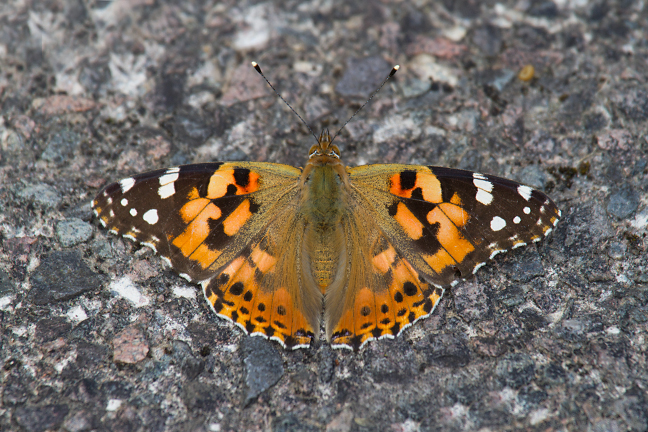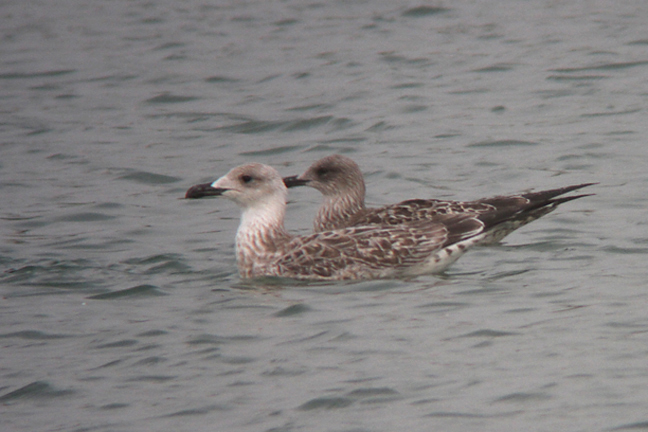Hasn't the weather been good this summer? After moaning about the constant rain, wind and hail storms last year it has been really good to keep waking up to another bright day. There have been plenty of butterflies around, which bodes well for future years. The buddleia in my garden is alive with Peacocks and Tortoiseshells plus at least one Painted Lady. In all I've seen eight species in the garden over the last week.
One was a very young bird bird and the other was almost in first-winter plumage.
 |
| Painted Lady |
A pair of Ravens reappeared where I work yesterday and announced themselves very noisily. They were present all day and will probably be around all winter now.
I am starting to make a habit of visiting Shawell A5 lagoons after work on Wednesday evenings and last night was no exception. The Black-tailed Godwit that was first seen on August 22nd was still present. Three Black-tailed Godwits at this small site, so far this autumn, is pretty impressive as far as I'm concerned. I'm still waiting for either a Little Stint or Curlew Sandpiper, but there's still time.
The gulls were around, but someone was shooting close by, which was making them nervous. I did manage to find two more juvenile Yellow-legged Gulls amongst them.
One was a very young bird bird and the other was almost in first-winter plumage.
 |
| Juvenile Yellow-legged Gull with Juvenile Lesser Black-backed Gull |
 |
| Juvenile Yellow-legged Gull |
The second juvenile appeared soon as the first one, but this one was clearly older. The basic features were similar to the first one, but this one had replaced almost all of its mantle and scapular feathers plus its coverts and tertials were very worn. In the photos above it looks quite scruffy around the head and neck, but this was because it had been washing quite vigorously.
Both birds had pale heads and necks with a dark mask around their eyes. I had the opportunity to compare them to juvenile Herring and Lesser Black-backed Gulls at close range and the differences were very obvious. In flight both of these birds showed a thick black tail band contrasting with a white rump and upper tail. Herring Gulls show less contrast between the tail band and the upper tail.
The bird in the photo below is the same as the one in the picture above, but this was taken later on when it had dried out.
Juvenile Yellow-legged Gull Moulting into First-winter Plumage
Both birds had pale heads and necks with a dark mask around their eyes. I had the opportunity to compare them to juvenile Herring and Lesser Black-backed Gulls at close range and the differences were very obvious. In flight both of these birds showed a thick black tail band contrasting with a white rump and upper tail. Herring Gulls show less contrast between the tail band and the upper tail.
The bird in the photo below is the same as the one in the picture above, but this was taken later on when it had dried out.

